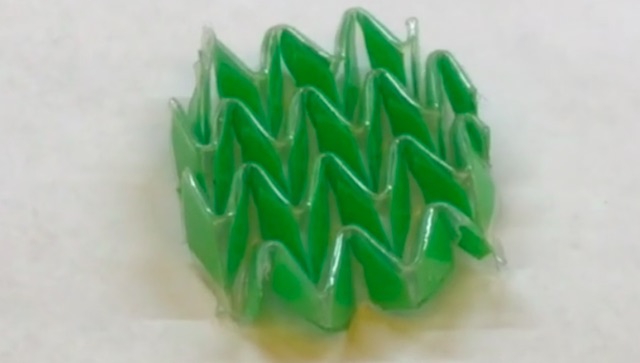
Engineers from CU Boulder have successfully created a new type of metamaterial. This material is capable of morphing into an assortment of pre-programmed, complex shapes simply by adjusting light and temperature. Scientists believe this metamaterial could have a variety of practical applications in numerous fields including robotics, biomedical devices, artificial muscles, and manufacturing.
In the past, scientists have attempted to use a multitude of physical mechanisms to change the shape, size, or structure of an object using programmable stimuli. Unfortunately, the results have typically been limited in size or extent. Additionally, it has proven challenging to completely reverse the object state changes.
“The ability to form materials that can repeatedly oscillate back and forth between two independent shapes by exposing them to light will open up a wide range of new applications and approaches to areas such as additive manufacturing, robotics and biomaterials.”
The new metamaterial changes all this. Using liquid crystal elastomers (LCEs), the new material is able to program two-way transformations on a macroscopic level. Thanks to the unique molecular arrangement of LCEs, they can easily experience dynamic changes once exposed to changes in light and temperature. To accommodate for this, scientists added a light-activated trigger to LCE networks. By exposing an object to particular wavelengths of light, the trigger can set a specific molecular alignment in advance. This means the trigger can remain inactive until it is exposed to the desired stimuli.
In tests, scientists formed the metamaterial into a square peg. The peg was then exposed to heat stimuli, causing it to melt and lose its original form. The material was then fit into a round hole; once the heat was no longer being used to stimulate the material it returned to its original form.
Scientists believe that there are numerous, varied applications for this new metamaterial. Because of its flexibility and durability, it is of particular interest in the biomedical community. It could be used to design and develop artificial limbs and muscles that move with the human body. The next phase for the team at CU Boulder will involve improving and streamlining the material for future commercialization.